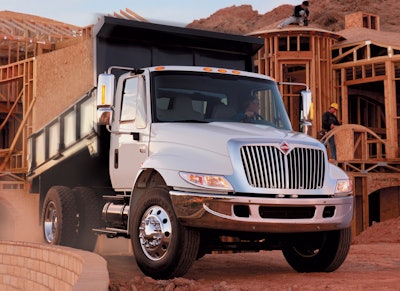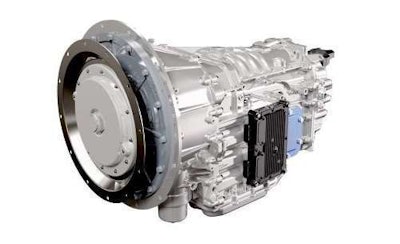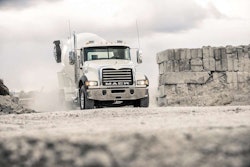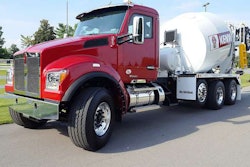
Eaton’s 7-speed Procision automatic transmission was designed to compete with Allison’s 2000 Series RDS, the market leader in the medium duty vocational truck segment for automatic shifting.
With driver comfort now an integral part of calculating a fleet’s total cost of ownership, Eaton designed its dual clutch model to be more efficient and in-cab friendly than anything else currently available.

The transmission’s dual-clutch design pre-selects the correct gear for smooth torque delivery to the rear wheels that lacks clutch lag and jerking thanks to the absence of a torque converter.
One clutch is fully engaged when the Procision is in gear while at the same time, according to Eaton Senior Account Manager Jeff Spitzner, the transmission’s advanced ECMs are pre-selecting the next gear shift based on throttle input, the truck’s load and data from the unit’s grade sensors.
“And then [the ECMs] calculate how much torque is being demanded at that point,” Spitzner says.
When it’s time for a gear shift, the first clutch disengages and the other engages. Because one of the clutches is always closed and the unit isn’t opening a torque converter, there is also a natural braking effect coming down steep grades.
For going up steep inclines, Eaton has engineered Hill Helper, which—based on grade and vehicle weight—prevents the truck from rolling back or forward for up to 3 seconds. This allows for a more controlled launch on steep hill and keeps your rear bumper from crashing through the grille of the car behind you.
I was able to effortlessly launch my DuraStar from a dead stop up a steep grade. Rollback was minimal and the truck accelerated smoothly at half-throttle.
A tangential benefit of the Procision is that its gears shift at a lower rpm, which reduces engine noise. On a non-full throttle launch, a Procision will shift in the 1,300 to 1,400 rpm neighborhood, versus a more traditional range of 1600 to 1,800 rpm. You’ll be in fourth or fifth gear without even knowing it because the shift is so smooth and the engine is so quiet.
Creep Mode allows controlled low-speed parking lot and loading dock driving without applying the accelerator. Forward and reverse creep speeds are independently adjustable to allow a lower speed in reverse. While there are a lot of things to like about the Procision, I thought the unit really shined at low-speed maneuverability.
A fully optimized Procision can offer upwards of 10 percent better fuel economy than a torque converter-equipped automatic—another selling-point for fleets interested in keeping more pennies in their pockets.
Up and down steep grades, on paved asphalt, at highway and low speeds, I thought the Procision found the right gear quickly and seamlessly every time. With almost car-like shifting, Eaton’s hydraulically controlled and oil cooled Procision takes a lot of the feeling of work out of a work truck with its quiet and smooth shifting.













